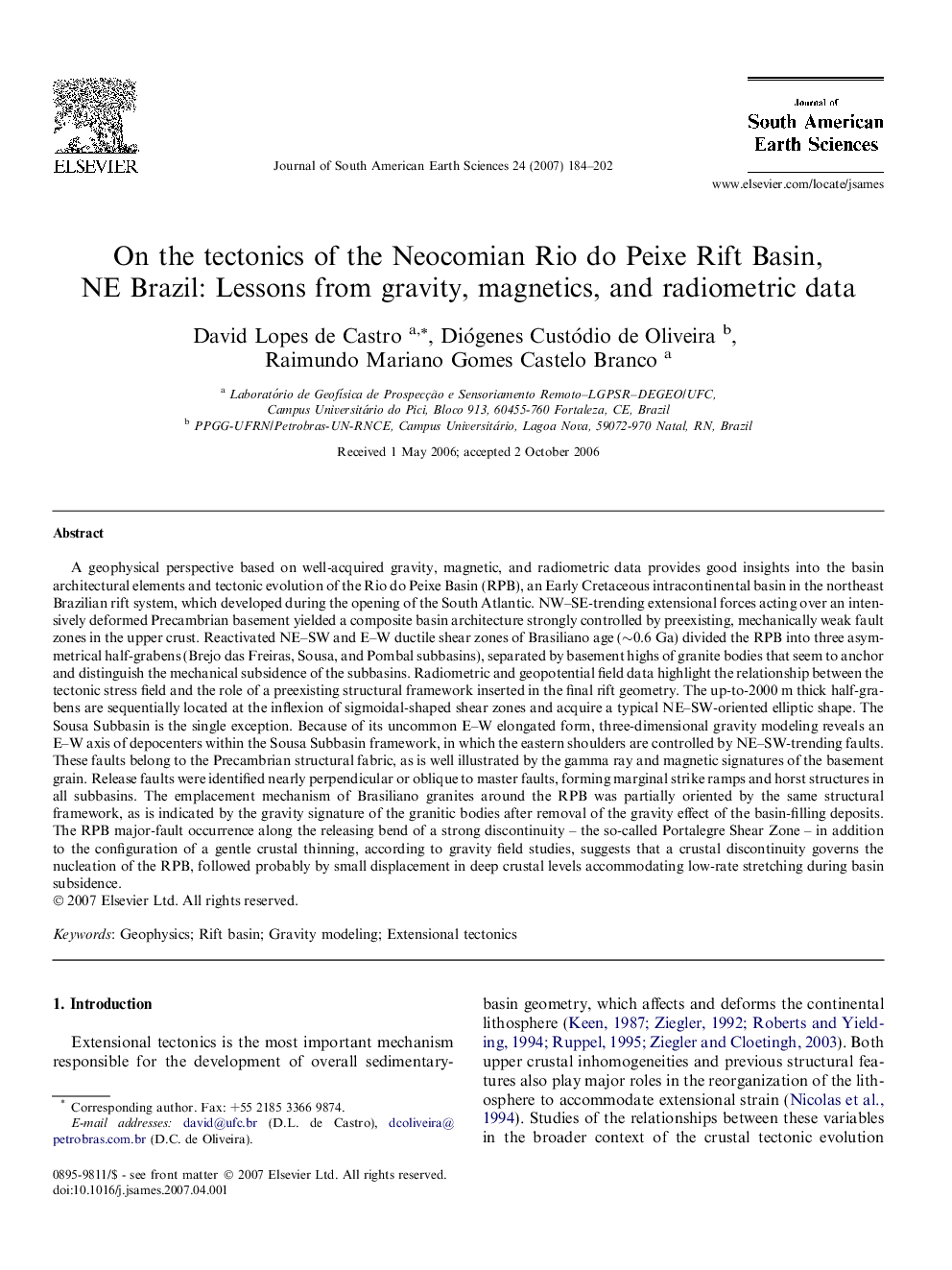| کد مقاله | کد نشریه | سال انتشار | مقاله انگلیسی | نسخه تمام متن |
|---|---|---|---|---|
| 4682742 | 1635179 | 2007 | 19 صفحه PDF | دانلود رایگان |
عنوان انگلیسی مقاله ISI
On the tectonics of the Neocomian Rio do Peixe Rift Basin, NE Brazil: Lessons from gravity, magnetics, and radiometric data
دانلود مقاله + سفارش ترجمه
دانلود مقاله ISI انگلیسی
رایگان برای ایرانیان
کلمات کلیدی
موضوعات مرتبط
مهندسی و علوم پایه
علوم زمین و سیارات
علوم زمین و سیاره ای (عمومی)
پیش نمایش صفحه اول مقاله

چکیده انگلیسی
A geophysical perspective based on well-acquired gravity, magnetic, and radiometric data provides good insights into the basin architectural elements and tectonic evolution of the Rio do Peixe Basin (RPB), an Early Cretaceous intracontinental basin in the northeast Brazilian rift system, which developed during the opening of the South Atlantic. NW-SE-trending extensional forces acting over an intensively deformed Precambrian basement yielded a composite basin architecture strongly controlled by preexisting, mechanically weak fault zones in the upper crust. Reactivated NE-SW and E-W ductile shear zones of Brasiliano age (â¼0.6Â Ga) divided the RPB into three asymmetrical half-grabens (Brejo das Freiras, Sousa, and Pombal subbasins), separated by basement highs of granite bodies that seem to anchor and distinguish the mechanical subsidence of the subbasins. Radiometric and geopotential field data highlight the relationship between the tectonic stress field and the role of a preexisting structural framework inserted in the final rift geometry. The up-to-2000Â m thick half-grabens are sequentially located at the inflexion of sigmoidal-shaped shear zones and acquire a typical NE-SW-oriented elliptic shape. The Sousa Subbasin is the single exception. Because of its uncommon E-W elongated form, three-dimensional gravity modeling reveals an E-W axis of depocenters within the Sousa Subbasin framework, in which the eastern shoulders are controlled by NE-SW-trending faults. These faults belong to the Precambrian structural fabric, as is well illustrated by the gamma ray and magnetic signatures of the basement grain. Release faults were identified nearly perpendicular or oblique to master faults, forming marginal strike ramps and horst structures in all subbasins. The emplacement mechanism of Brasiliano granites around the RPB was partially oriented by the same structural framework, as is indicated by the gravity signature of the granitic bodies after removal of the gravity effect of the basin-filling deposits. The RPB major-fault occurrence along the releasing bend of a strong discontinuity - the so-called Portalegre Shear Zone - in addition to the configuration of a gentle crustal thinning, according to gravity field studies, suggests that a crustal discontinuity governs the nucleation of the RPB, followed probably by small displacement in deep crustal levels accommodating low-rate stretching during basin subsidence.
ناشر
Database: Elsevier - ScienceDirect (ساینس دایرکت)
Journal: Journal of South American Earth Sciences - Volume 24, Issues 2â4, SeptemberâOctober 2007, Pages 184-202
Journal: Journal of South American Earth Sciences - Volume 24, Issues 2â4, SeptemberâOctober 2007, Pages 184-202
نویسندگان
David Lopes de Castro, Diógenes Custódio de Oliveira, Raimundo Mariano Gomes Castelo Branco,